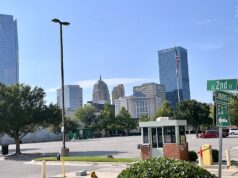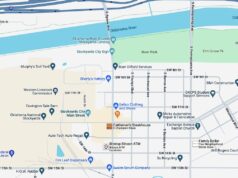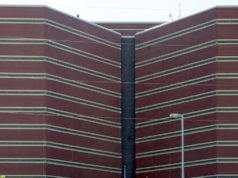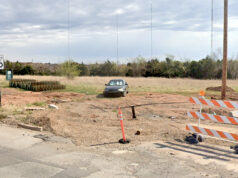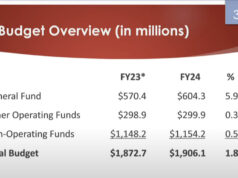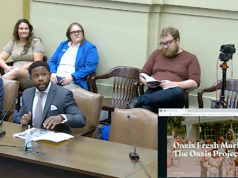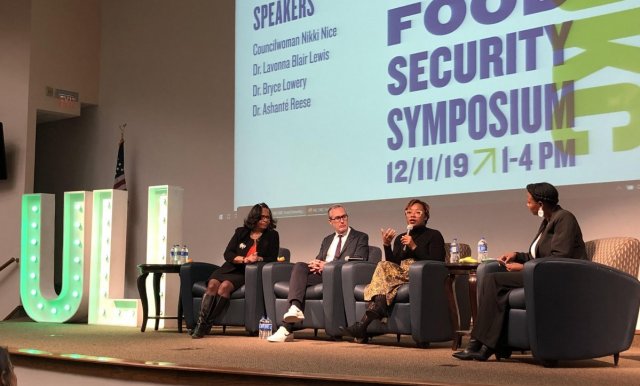

Oklahoma City residents, policymakers and experts who have studied food security in low-income communities gathered in the Metro Tech auditorium Wednesday to discuss potential ways to solve the food access crisis in northeast OKC.
Hosted by Urban Land Institute Oklahoma for the purpose of collaboration and engagement, the food symposium was moderated by Oklahoma City Ward 7 Councilwoman Nikki Nice and featured three professors from across the country, including one from the University of Oklahoma.
LaVonna Lewis, a professor at the University of Southern California, previously lived in northeast OKC and said she has been disappointed not to see the area improve in terms of food access.
Right now, northeast OKC is considered a food desert, defined as a geographic area — particularly lower-income neighborhoods and communities — where access to affordable quality and nutritious foods is limited.
Lewis said she had been doing “food justice” work in LA since about 1999 and thought there were similarities between the issues OKC and LA are facing.
“Over the last few days, I’ve had this sort of déjà vu feeling in terms of seeing parts of northeast Oklahoma City going through the same stuff as southeast Los Angeles was going through.” Lewis said. “So I’m hoping some of the lessons learned in LA would be relevant for here.”
Lewis said there is already a lot of good work going on within the northeast side and that people need to start helping sooner rather than later. However, OU architecture professor Bryce Lowery — a former student of Lewis’ — said the long-standing issue has caused fatigue.
“I’ve been here six years, and it’s been a conversation that I’ve heard the whole time I’ve been here — what do we do about the northeast side?” Lowery said.
Lowery said he thinks there are people looking for alternative food strategies that don’t involve large corporations. He said food security work needs to feature community based solutions that elevate whatever works.
“If the support and the will is there, it’s not unreasonable to see northeast Oklahoma City provide food for all over the state,” Lewis said.
Growing problems
During Nice’s speech at the food symposium, she stated that residents within the 73111 ZIP code have a lower life expectancy than other OKC residents by up to 18 years.
Currently, northeast OKC has no full-service grocery store, creating a desert for healthy food options. But when it comes to the unhealthy food options, there still aren’t even many of those.
“In 73111, there are only seven fast food restaurants,” Nice said. “I want to make it clear for everyone in this room today, when we’re looking at what full-service grocery store looks like (…) we have not had one.”
In July, the northeast OKC Smart Saver closed on short notice and with few answers to the public’s questions. Work is underway for that grocery chain’s owners, the Binkowski family, to open a new, smaller store near N.E. 36th Street and Kelley Avenue. In mid-August, the Binkowskis said they planned to open the new store within 60 to 90 days. More than 115 days later, the store has yet to open.
Also in August, Homeland announced plans for a large grocery store at the corner of Lincoln Boulevard and N.E. 36th Street, with completion targeted for late 2020 or early 2021.
Until those stores open, northeast OKC only features the Cash Saver grocery store at N.E. 11th Street and Martin Luther King Boulevard. There are also three Family Dollars and one Dollar Tree in the area.
Lewis said people having public health conversations need to consider the environmental options available to community residents.
“People were very comfortable demonizing people for the choices they were making without having a full appreciation about the choices that were available,” Lewis said.
Nice showed pictures in her presentation of empty shelves from these stores and the need for renovations.
“It is important for us to know what is really happening in the community is that we are accurate with the information as it pertains to (…) northeast Oklahoma City, especially those most vulnerable in the 73111 ZIP code,” Nice said.
‘Maybe one of these corners becomes a place for local food production’
When it comes to other solutions, University of Maryland in Baltimore County professor Ashanté Reese said people should not be afraid to think outside of the box.
“What I’m interested in and curious about are the kinds of organizations and strategies that haven’t gotten lifted up that could actually be more supported in the non-policy work (in) that they do to bring greater access,” Reese said.
To that end, Lewis said a major difference between southeast Los Angeles and northeast OKC is the amount of land available.
“The property is available (in northeast OKC), so we hope that changes will be made to move the needle,” Lewis said.
Lowery said OKC has a robust amount of dedicated agricultural land that needs to be considered by community groups.
“Whether or not that’s to drop a seed in the ground or to build a hydroponic farm, there are a lot of things that we need to be thinking about in terms of land use,” Lowery said. “[We could] say, ‘Maybe one of these corners becomes a place for local food production.'”
Lowery, whose most recent work investigates the relationship between grocery store location, socioeconomic statuses and diet-related health outcomes in Oklahoma, said low-income and minority communities often have fewer grocery stores.
Lowery said the reach of a grocery store is given a one mile buffer, and northeast OKC has a large area uncovered by that range. While living in a “car culture” makes it easy for some to get around, Lowery said there is a need to think about the people who don’t have transportation.
“Wouldn’t it be nice if we started thinking holistically about allowing people alternative ways of getting to a grocery store?” Lower said. “Beginning to build sidewalks, we think about transit — these shuttle services that could also be employed in these areas that help link folks who might be isolated.”
When it comes to having hope for northeast OKC, Lewis said the community has ideas and will not perish, but rather will survive.
“There are multiple ways to get to where we are trying to go,” Lewis said. “We do ourselves a disservice when we say, ‘My way is the only way to do it.'”









